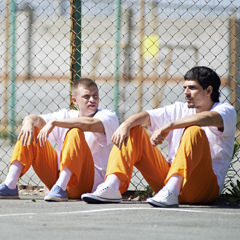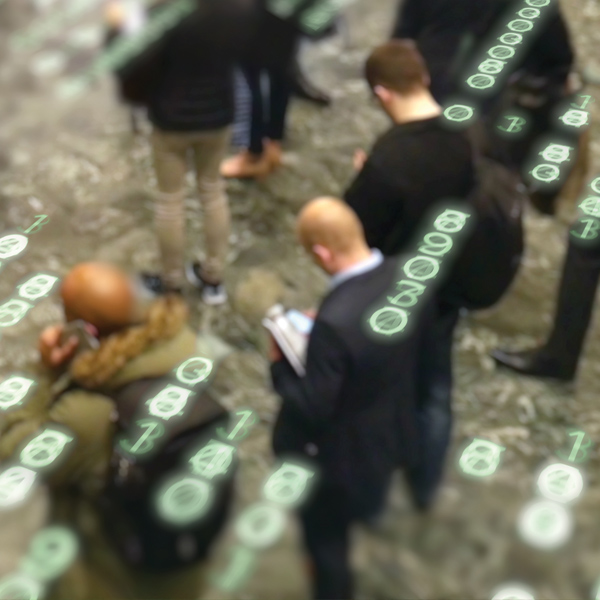What is The Law and Neuroscience Project?
The Law and Neuroscience Project is the first systematic effort to bring together the worlds of law and science on questions of how courts should deal with recent breakthroughs in neuroscience as they relate to matters of assessing guilt, innocence, punishment, bias, truth-telling, and other issues. The project is supported by an initial three-year, $10 million grant from The John D. and Catherine T. MacArthur Foundation. It will be centered at the University of California, Santa Barbara (UCSB), and will involve scientists and legal scholars from more than two dozen universities nationwide.
Which universities are participating in the Project?
Columbia University
Dartmouth College
George Mason University
Harvard University
Massachusetts Institute of Technology
New York University
Northwestern University
Princeton University
Rutgers University
Stanford University
University of British Columbia
University of California, Berkley
University of California, Riverside
University of California, Santa Barbara
University of Chicago
University of Illinois, Urbana-Champaign
University of Minnesota
University of New Mexico
University of North Carolina, Chapel Hill
University of Pennsylvania
University of San Diego
University of Southern California
University of Virginia
Vanderbilt University
Washington University in St. Louis
What will The Law and Neuroscience Project do?
At the outset, three working groups of scholars and legal experts will address the topics of addiction, brain abnormalities, and normal decision making as they relate to concepts in the law such as criminal responsibility. Each working group will be directed by a neuroscientist and a legal expert and include up to 15 neuroscientists, legal scholars, philosophers, and practitioners involved in the legal system, including a judge. Each group will review the current research and scholarship in neuroscience in law, identify the gaps in knowledge and understanding, and develop specific research proposals in each area that would contribute to improved law, policy, and legal proceedings.
What will be the results of The Law and Neuroscience Project?
Within three years, The Law and Neuroscience Project hopes to make progress toward the following goals:
(a) Neuroscientific Discoveries Relevant to Law: Starting in year 2, the Project will fund research that will lead to scientific publications and increase knowledge of issues relevant to the topics of the three networks. The Project hopes to support the formulation and testing of neuroscience research hypotheses designed to directly address gaps in legal/policy issues and understanding.
(b) Recommendations for Reforms: When appropriate, the working groups will develop recommendations for judicial guidelines in handling neuroscientific evidence, ethical guidelines concerning proposed treatments, and law and policy regarding addiction and related criminal behavior, treatment of psychopaths or criminally insane persons, and determination of competency or culpability.
(c) A Primer for Judges: A primer on neuroscience for judges and practicing lawyers that provides the necessary neuroscientific and technical background for cases that are likely to arise. The primer will probably include chapters on functional neuroanatomy, the uses and limits of different kinds of brain scans, experimental designs and what they can and cannot reveal, the basic law of responsibility, the basic law of evidence, and then applications to the neuroscience of addiction, psychopathy, impulsivity, lies, prejudice, memory, and so on. This volume will be useful for judges who need a quick reference source when these issues arise in their courts, but it will also be written to be accessible to the general public and to scholars who want to gain the background they need in order to begin working in law and neuroscience.
(d) Website: The Project’s website will include a constantly updated interactive bibliography, discussions of recent developments, and other aids for anyone doing research in this area.
(e) Three Monographs or Collections: Each network will aim to produce a monograph or a collection of articles, as appropriate, on its topic: addiction, brain abnormalities, and decision making.
(f) Course Materials: Collectively, the Project aims to publish a textbook and syllabi for law school courses on law and neuroscience.
(g) Retreats: The Project will arrange three weekend retreats per year for about 20 judges, lawyers, legislators, reporters, and opinion leaders to learn the basics of neuroscience and applications to law.
(h) Three Major Conferences: The Project will also sponsor one major public conference each year, starting in the Spring of 2008. These conferences will be open to media coverage and may lead to published collections of articles.
Who will run The Law and Neuroscience Project?
The various parts of The Law and Neuroscience Project will be integrated under a Governing Board consisting of the Director of the Project, one co-director of each working group, and at least an equal number of other members from outside of the Project:
• Sandra Day O’Connor, Former Supreme Court Justice (Honorary Chair)
• Michael S. Gazzaniga, University of California, Santa Barbara (Chair)
• Stephen E. Hyman, Harvard University
• Stephen J. Morse, University of Pennsylvania Law School
• Marcus E. Raichle, Washington University School of Medicine
• Jed S. Rakoff, United States District Judge for the Southern District of New York
• Frederick Schauer, Harvard University
The Governing Board will meet each year in person as well as regularly through email, telephone, and/or videoconference. The Governing Board will make all major decisions regarding the Project, including policy, direction, participation, and funding.
The day-to-day operations of the Project will be located at the University of California, Santa Barbara, and under the direction of Michael Gazzaniga. With the help of the co-Director Walter Sinnott-Armstrong, the Director will ensure that the work groups collaborate, share information, and avoid redundancies, suggesting changes in direction or operations when needed. The Director will also serve as editor of a website for the Project and organize the annual conference.
What is the MacArthur Foundation and why is it funding this project?
The John D. and Catherine T. MacArthur Foundation (is a private, independent grantmaking institution dedicated to helping groups and individuals foster lasting improvement in the human condition. The Foundation has long supported cross-disciplinary research and efforts in juvenile justice and mental health to bring science to bear on law. With an endowment of more than $6.4 billion and annual grantmaking of more than $225 million, MacArthur is one of the nation’s largest private foundations. It has offices in the U.S. in Chicago and in India, Mexico, Nigeria, and Russia, and supports grantees at work in 60 countries.
To obtain more information about The Law and Neuroscience Project, visit the website or contact Michael S. Gazzaniga, Ph.D., Director, The Law and Neuroscience Project at The SAGE Center for the Study of Mind, University of California, Santa Barbara, 93106; 805-893-5006.
Background on the Law and Neuroscience
What is neuroscience?
Neuroscience is the study of the brain and nervous system, and how they enable behavior and learning.
How is neuroscience connected to the law or the legal system?
The U.S. legal system incorporates assumptions about behavior that, in some cases, are centuries old and based on common sense and culture. For example, it tends to assume that people make deliberate choices and that those choices determine what they do. However, recent breakthroughs in neuroscience research indicate that such choices may sometimes be based upon electrical impulses and neuron activity that are not a part of conscious behavior. These actions can include not only criminal activity, but also decisions made by police, prosecutors, and jurors to arrest, prosecute, convict, or mandate treatment. Therefore, as neuroscience increases understanding of what influences human behavior, how this knowledge is applied can have a major impact on the future of the legal system.
What are these “breakthroughs” in neuroscience?
During the last two decades, neuroscientists have developed powerful tools to investigate the neural activity correlated with fundamental aspects of behavior. Through the use of functional magnetic resonance imaging and electrophysiology, scientists know which regions of the brain are active during behavioral monitoring, emotional regulation, and what can happen when these networks malfunction or become disconnected. Scientists also know the network of brain regions where activity is correlated with our ability to perceive the thoughts of other people, and the critical role that these brain processes have in our social interactions. Not only have scientists learned a great deal about how the brain perceives objects, maintains attention, assembles language, sets goals, plans actions, and detects cheaters, they are even beginning to explore the brain’s role in religious experience and in moral decision making. Modern neuroscience tools have also helped make tremendous advances in understanding, diagnosing, and treating many psychiatric and neurological syndromes ranging from depression to epilepsy.
Is neuroscience already being used by the legal system?
Yes. In Atkins v. Virginia (2002), the United States Supreme Court held that it is unconstitutional to execute mentally retarded defendants because it amounts to cruel and unusual punishment based on “the relationship between mental retardation and the penological purposes served by the death penalty.” In Roper v. Simmons (2005), the Supreme Court added that defendants also could not be executed for crimes committed before the age of 18. Several briefs in Roper v. Simmons explicitly cited the latest neuroscientific studies as evidence that adolescents’ brains are not fully developed in specific ways, especially in their frontal lobes. This lack of development was said to affect adolescents’ mental abilities, including their self-control and, hence, their responsibility for their actions.
In the 1982 trial of John Hinckley for the attempted assassination of President Ronald Reagan, defense lawyers contended – among other things - that a CAT-scan of Hinckley showing widened sulci (groove) in his brain was “powerful” evidence of his schizophrenia. Such evidence had never before been admitted in an American courtroom, and the judge hearing the case clearly agonized over its admissibility. He twice ruled the CAT scan out of bounds before eventually changing his mind and admitting it. Prosecutors offered expert testimony disputing the defense’s assertions, but jurors found Hinckley not guilty by reason of insanity.
Why are people concerned about applying neuroscience research within the legal system?
While recent progress in neuroscience research has been astounding, it remains a relatively young field of research. In some areas, scientists lack the theoretical formulations needed to make the most of these new technologies.
With informed and cautious reform, the justice system could produce more accurate judgments and more effective interventions with less bias. Society could have less crime and fewer people in prisons. However, the potential benefits of proper uses of neuroscience in law could easily be outweighed by the harm caused by its misuse. The commercial introduction of functional MRI or EEG-based lie detection, for example, without rigorous proof of accuracy could lead to disaster for the field – as well as for those individuals harmed as a consequence of flawed tests. Expertise in fields related to law will be crucial to assessing both how neuroscience is likely to be used in the legal system and how it should be used in that system.
As neuroscientists investigate scientific issues relevant to the law, legal experts need to explore ways in which neuroscience can be integrated into the legal system.




